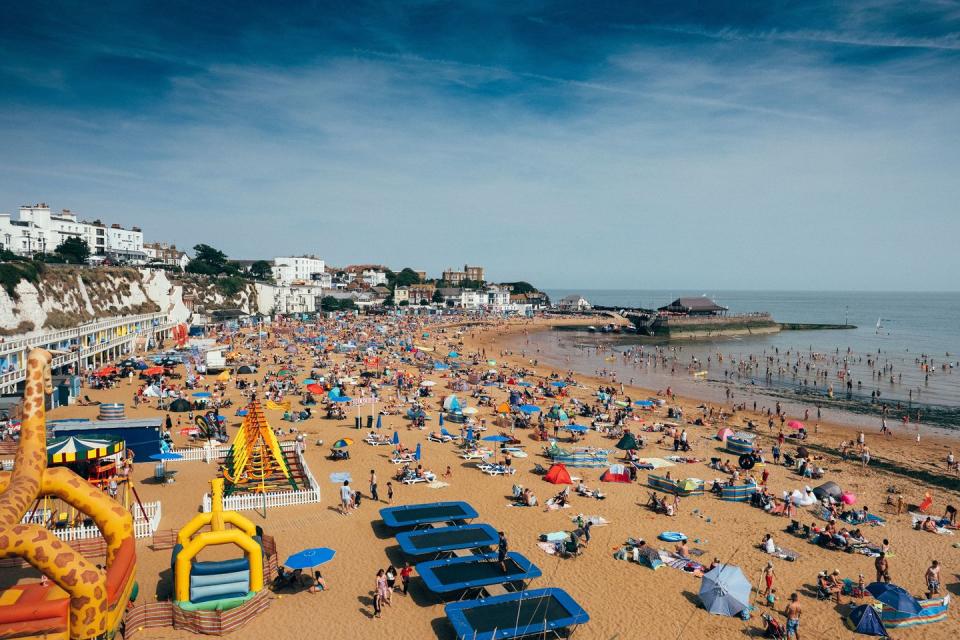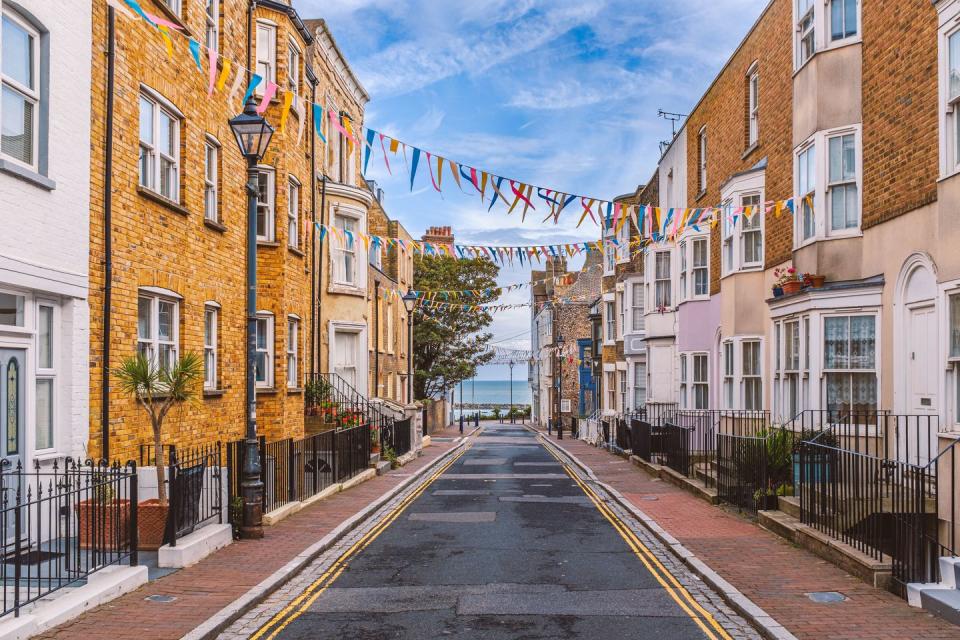The Great British Seaside: why UK coastal towns will always appeal

We really do like to be beside the seaside. Perhaps it’s a facet of living on an island, where the furthest place from the coast you could ever be - Coton in the Elms, Derbyshire - is only 70km from the shore. Perhaps it’s just animals making their way to water, but as we come up for air between Covid waves, for a lot of people, being free means the sea.
Driven by both desire and by law, 2021’s holidays shall happen, if at all, on British beaches. For some, a need to be by the coast will take them beyond just day trips and mini breaks to flat-out relocation. All across the country, seaside real estate - the misty-eyed idea of making your whole life a holiday - is the most sought-after it’s been in decades.
In Ramsgate, on the Kentish coast, where I live, as we emerge from the weird chrysalis of multiple lockdowns, houses you saw dip a toe into the market before being sold within 24 hours now have new owners. There’s scaffolding everywhere, and those trademark charcoals of a post-2015 renovation, a house that’s been ‘done’. A friend’s new cafe welcomed 400 people in its first weekend - it seemed, she said, over half had arrived in the previous months or indeed weeks. And the strangest thing is that some people haven’t even visited before they move. Houses, flats, whole new beginnings purchased after nothing more than a glitchy 3D tour.

I’ve felt a strange tugging about the new waves of people that come. A little undercurrent I have no right to feel - after all, I wasn’t born by the sea either. I moved here full time a few years ago, my parents eight years before that, just as so many people have before them, flung from inland cities as if by centrifugal force.
I understand why people want to be here too. For me, it’s never been untouched Devon stretches or Cornish coves that appealed, it’s always been the seaside in its most see-saw form that I’ve loved most, seaside towns: arcades, ice-creams. Pebbles under bottoms, wind flicking sand into suncream, parasols as umbrellas, vice-like water. It’s the sheer hope of it - the way it’s set up for days of sun that don’t always come, and then what happens when it does burst through: a sense of shock, a happy gliding.
The British seaside occupies a place both in personal nostalgias - childhood memories, first trips without parents - but also a broader societal one. Not sepia-tinted exactly, but Martin Parr-ized perhaps, hyper saturation, an appetite for oddness - seagulls sparring for chips, a sudden sea of bodies as soon as a cloud passes, paper-white to lobster-red. The thing is, canonised in collective imagination though they are, these constant co-existences - front lines and fairground rides, hard days and holidays - really do characterise life here.
For all the selective sonic-speed gentrification, British seaside towns experience some of the most devastating rates of poverty in the country. The see-saw happens in micro and macro: the carnage of a Tuesday after a Bank Holiday weekend, with beaches burdened with three-days’ detritus, and then on a larger scale, with the stark effects of seasonal trade: whole winters with rare custom. Pan out further and it’s a story repeated through time.

Margate, just around the coast from me, and where I set my second novel Dreamland, has experienced these tidal highs and lows as if supercharged by supermoon. Once a small, working coastal town, in the eighteenth century it became a pioneer of the British seaside resort, with sea-bathing machines and vogue-ish sanatoriums. Over the next two centuries, as accessibility from London shifted from fourteen hours by stagecoach to just a few hours on the railway, its popularity as a holiday destination soared, accelerated by the advent of paid holidays.
Then, in the 1970s, cheap flights to Europe and package deals served a deathblow as they tempted holidaymakers further afield. This sparked a downturn which went on to be cemented by nationwide recession in the early 1980s, and the next three decades in Margate were brutal. Hotels were broken up into bedsits, and a transience of population (families, often in difficulty, shipped in and out by authorities) meant that schools saw their student bodies change by 50 per cent year-on-year.

Now it seems the tide has turned once again. 2019 saw record numbers of visitors welcomed in Margate, and if a recent sunny Saturday was anything to go by - sound systems on the harbour arm, the sea glittering like diamonds - 2021 will see the same. But things going ‘well’ in a place like Margate brings with it new complexities, felt exponentially by the most vulnerable people there. In the last five years, house price rise has outstripped that of central London by 300 per cent, and rents have doubled, triggering fresh waves of displacement.
That’s partly why I set my book, Dreamland, in the near future: a fear of history repeating itself. Some of the signals may already be in the air: flights to Europe, as if re-invented, will return again. The thrum of cities will feel compelling rather than contagious. Climate change will lean closer and more regularly into our everyday lives as sea levels rise and weather patterns shift.

Strangely, for a novel that veers close to dystopia, Dreamland is - like this summer will be for many - a love-letter to the British seaside. But one of the questions it hopes to raise in readers’ minds is this: if the tide changes once again, who will stay? Who will take the place of those who leave? And what does the view from the edge look like over the next twenty years?
Dreamland by Rosa Rankin-Gee, a love story set in a near-future Margate, is out now.
Sign up to our free weekly newsletter for skincare and self-care, the latest cultural hits to read and download, and the little luxuries that make staying in so much more satisfying.
Plus, sign up here to get Harper’s Bazaar magazine delivered straight to your door.
You Might Also Like


